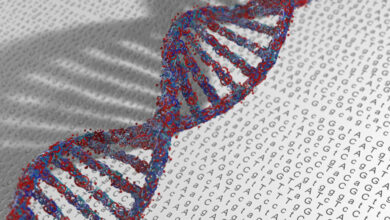Food-oriented LLM tackles data challenges to advance nutritional applications

FoodSky: A Revolutionary Food-Oriented Large Language Model
In a groundbreaking development, researchers from the Institute of Computing Technology of the Chinese Academy of Sciences, in collaboration with other experts, have introduced a pioneering food-oriented large language model (LLM) known as FoodSky. Their innovative study has been published in the prestigious journal, Patterns.
Large language models (LLMs) have demonstrated immense potential in addressing complex challenges across diverse fields. However, their application in the realm of food has remained largely unexplored. The development of food-oriented LLMs presents unique challenges, primarily stemming from the fragmented and limited nature of high-quality food data. Information related to food is sourced from a variety of platforms, often riddled with spelling errors, grammatical inconsistencies, and duplicate entries. Additionally, the vast array of topics within the food domain, ranging from ingredients to nutritional data, poses significant hurdles for LLMs in effectively processing and managing this extensive information.
To overcome these obstacles, the researchers devised FoodSky—a specialized large LLM tailored for culinary and nutritional applications. They kickstarted the process by creating FoodEarth, a meticulously curated Chinese dataset comprising 811,491 entries covering a wide spectrum of food-related subjects sourced from reputable platforms. The FoodSky model was then trained using the extensive FoodEarth corpus.
Technically, the team introduced a topic-selective state-space model along with a hierarchical topic-aware retrieval-augmented generation algorithm. These cutting-edge advancements enable FoodSky to seamlessly integrate topic-specific information and retrieve data from external knowledge bases, thereby enhancing its capacity to comprehend intricate food semantics and generate contextually relevant text.
Remarkably, the FoodSky model achieved impressive zero-shot accuracy rates of 83.3% on China’s National Chef Examination and 91.2% on the National Nutritionist Qualification Examination, underscoring its efficacy in delivering reliable culinary and nutritional guidance. The implementation of FoodSky is poised to revolutionize public health and nutrition, culinary education, and the food industry at large, thereby fostering the adoption of healthier and more sustainable dietary practices.
This groundbreaking research paves the way for a new era in food-oriented language models, with far-reaching implications for various sectors. FoodSky is set to spearhead advancements in nutritional science, culinary education, and industry practices, ultimately contributing to the promotion of healthier lifestyles and sustainable dietary patterns.
For more information on this groundbreaking study, please refer to the research article published in Patterns by Pengfei Zhou et al. (DOI: 10.1016/j.patter.2025.101234).
This transformative development was made possible by the collaborative efforts of the Chinese Academy of Sciences. For further updates and insights, visit their official website: https://english.cas.cn/.




